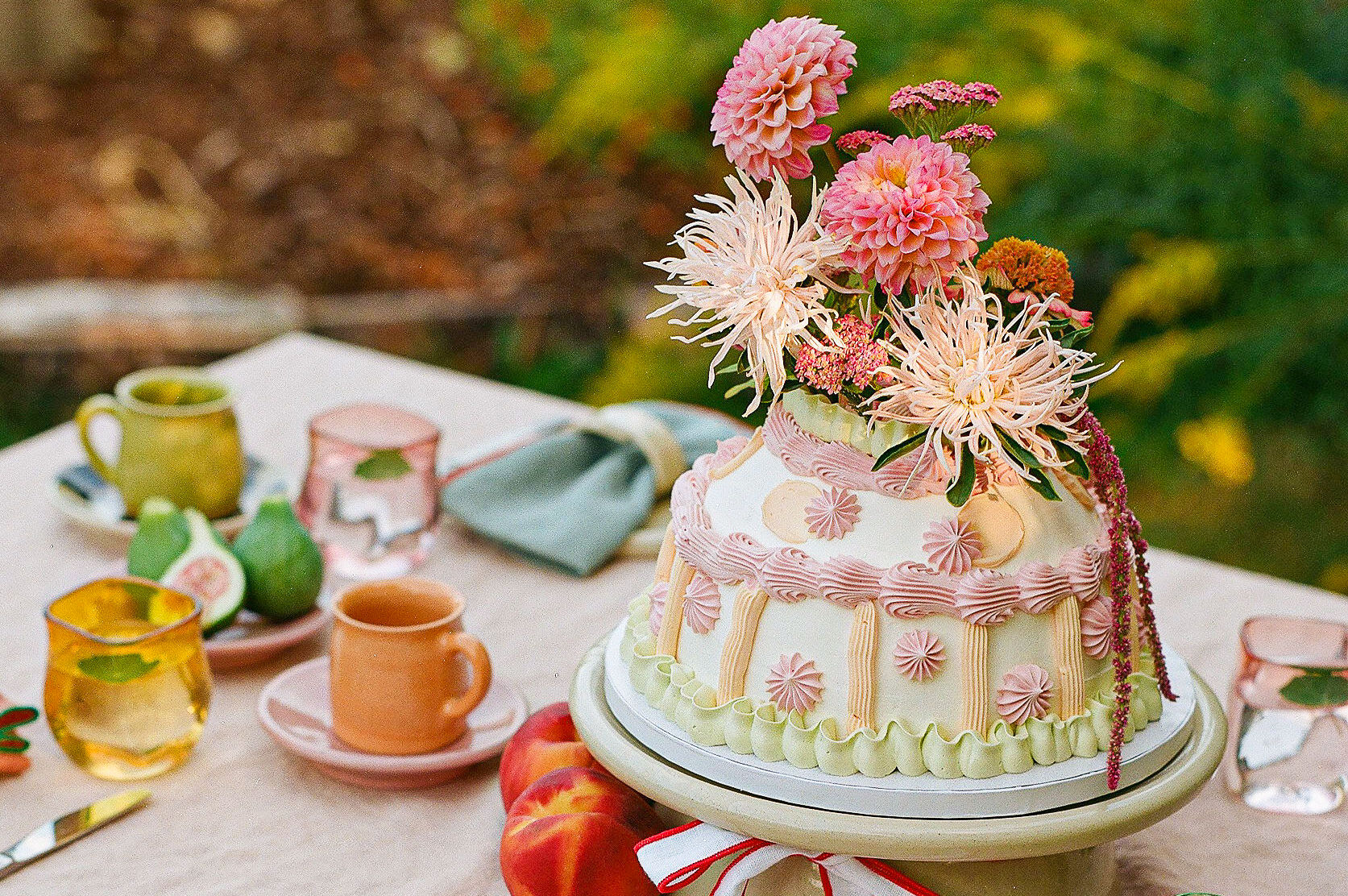The Food Lover’s Guide to Summer Entertaining
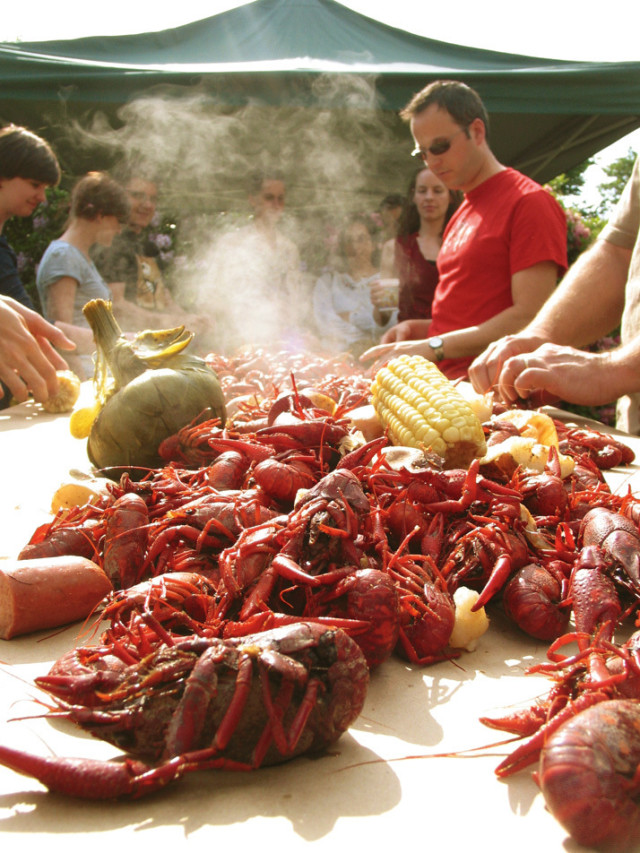
The key to a successful outdoor party—whether it’s a BYO burger-and-beer bash among close friends or a glitzy cocktail extravaganza complete with monogrammed stir sticks and blazing tiki torches—is preparedness. Even the most impromptu of backyard barbecues, at the very least, requires someone to have the foresight to successfully light the grill before the hotdogs are thrown on.
In order to nudge aspiring hosts in the right direction, we’ve compiled a compendium of tips covering everything from grilling the perfect burger to the tools you’ll need to roast a pig. Armed with this backyard party primer, you should be well-equipped to get the barbecue smoking and the cocktails shaking all in the amount of time it takes Martha to dial up her parole officer.
Read More: The Food Lover’s Guide to Summer Grilling and Summer Cocktails
{page break}
Quid Pro Cue?
GOODS: Choosing between gas and charcoal grills
These days barbecues, smokers and grills can range in price from $25 to $10,000 and in size from 12 inches to 6 feet long. Aside from the ubiquitous Weber kettle grills, there’s a multitude of pimped-out gas grills on the market; substantial portions of the grilling population MacGyver their own grills out of oil drums and various mechanical parts; and Oregon is even home to Traeger, a manufacturer of wood pellet grills. So how do you decide what kind of grill is right for you? Here are a few pros and cons to consider if you’re choosing between the most common varieties.
CHARCOAL GRILLS
Kettle
Pros: Vents in the bottom and in the lid allow you to control the temperature. The grill’s rounded shape makes it ideal for grilling, barbecuing and smoking.
Cons: Heating lump charcoal or briquettes in the grill can take a while, unless you use lighter fluid, which can infuse your food with an unpleasant chemical flavor.
Brazier
Pros: Simple, inexpensive, often disposable
Cons: These usually don’t come with a cover, so they’re best for cooking burgers and dogs. They also don’t always come with a grate to hold the coals, which makes the grill a bit cumbersome.
Hibachi
Pros: Its small size makes it useful for urban dwellers with small patios or decks. These are best used to grill skewered meat or vegetables over high heat. Many models allow you to adjust the heat by raising or lowering the cooking grate closer to or farther away from the coals.
Cons: Hibachis are usually too small to be able to grill efficiently for large groups.
GAS GRILLS
Pros: Quickest way to barbecue or grill food. Multiple burners allow you to cook several different ingredients at once.
Cons: The temperature of a gas grill can’t get as high as that of a dry-burning charcoal grill, which means that when you cook food on a gas grill you’re essentially steaming the bottom surface of the meat—which in turn means you won’t get that strong, smoky, seared, flavorful brown crust on your meat that you get from charcoal.
Burn, Baby
GOODS: Fueling the fire
If you own a gas grill—and the majority of Americans do—bully for you. The only decision you’ll need to make before throwing that juicy hunk of cow onto the “fire” is whether to turn the burners up to high or medium-high. Those of us with charcoal grills face more difficult decisions when it comes to fueling our cooking flames. Here’s a basic rundown of fuels:
“CHARCOAL” BRIQUETTES:
The original charcoal briquettes were invented and patented in the 1920s by Orin Stafford, a chemistry professor at the University of Oregon, and later marketed by Henry Ford and his Kingsford Company, whose various bags of charcoal briquettes are, today, the bestselling briquettes in the country. Originally, these briquettes were made from powdered wood charcoal, but today most are made from mined coal, leading many barbecue purists to raise concerns over potential contaminants (arsenic? mercury? lead?) often found in coal. If you prefer briquettes, make sure you’ve allowed them to burn long enough that a covering of gray ash coats the outside before you start grilling.
LUMP CHARCOAL:
Barbecue purists tend to use lump charcoal, which consists of irregular pieces of burnt wood (such as mesquite or hickory). Most of the chefs that provided us with grilling menus for this story preferred to use lump charcoal as well. The downside to lump charcoal is that it costs considerably more than briquettes. The upside is that you don’t have to wait for it to heat up be-fore adding it to an existing fire, as you do with briquettes. Plus, most lump charcoal will infuse your food with an authentic smoky flavor. In Portland, we have two main lump charcoal brands to choose from. Most grocery stores sell Lazare mesquite lump charcoal—Wild Oats and New Seasons sell their own brands—but you can also buy it from Paul Peffer, owner of Fast Track Marketing (503-254-0774), a supplier of Northwest “cooking woods” that sells everything from mesquite and hickory to alder and organic cherrywood lump charcoal.
WOOD CHIPS:
Dried, untreated hardwood with varying degrees of aroma can be added to charcoal or gas grills to infuse food with a smoky flavor. The following are the most commonly used hardwoods from strongest to mildest, according to Peffer: Mesquite, hickory, grapevine, pecan, apple, maple, wild cherry, oak,
alder. Be sure to soak the wood in water for at least 30 minutes so that it will burn slowly once it’s added to hot coals. It is not a good idea to use soft woods like pine, fir or hemlock, because their strong resins will turn your meat or vegetables into turpentine-flavored muck. If you are using a gas grill you can place them in a drip pan above a burner and let them steam. Most grocery stores sell bags of wood chips alongside bags of charcoal. Paul Peffer of Fast Track Marketing (see above) also sells local hardwood scraps.
{page break}
Supper Service
GOODS: Summer serving dishes

All too often, outdoor party hosts end up splitting salad for 25 guests into a mish-mash of semilarge mixing bowls pulled from the dark recesses of their kitchen cupboards. While there’s nothing wrong with mixed-use bowls, why not show off your garden salad or grilled vegetables in an elegant container that can actually contain it all? Although English trugs were originally used for hauling harvested flowers and vegetables from the garden, they work just as well as serving dishes. Modern, food-friendly designs have recently hit the shelves in home and gardening stores—go for the polished look of the acacia trugs from Smith & Hawken (26 NW 23rd Ave; 503-274-9561), which come in large ($89) and small ($39) sizes.
{page break}
The Beef On Ground Beef
HOW TO: Preparing the perfect burger
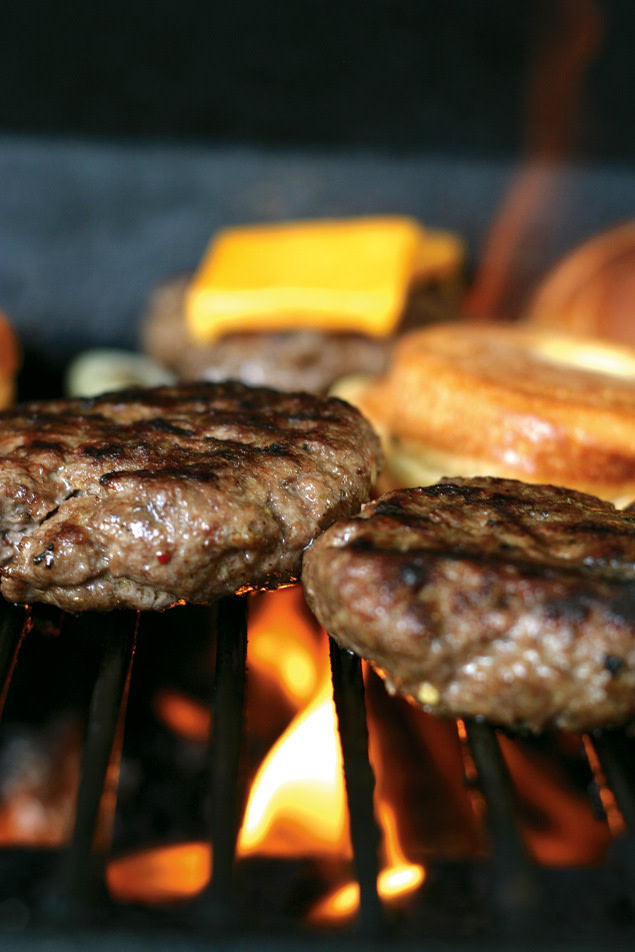
Ask any patty flipper, chef or cookbook author how to make the perfect burger, and they’ll each let you in on a completely different secret. Determined to find out if there were any burger-making tips that held true for all walks of burger-heads, we combed through more than two dozen cookbooks (from the River Cottage Meat Book by Hugh Fearnley-Whittingstall to How to Cook Everything by Mark Bittman) to compare their advice on burger making—and came up with a few common tips.
• The leaner the meat you use, the drier your burger will be. The higher the fat content, the juicier it will be. Most cookbooks suggest using ground beef or chuck that’s labeled around 80% lean beef.
• About eight years ago, the USDA announced that ground beef was at high risk for carrying E. coli (when meat is ground, more of it is exposed to potential bacteria the longer it sits). As a result, the USDA urged consumers to cook ground beef patties until the temperature at the middle reached 160 degrees—in other words, dry hockey pucks. If you prefer rarer burgers, buy whole, fresh beef chuck and grind it just before cooking it.
• It’s very important to gently shape the meat; manhandling it will result in a tough burger.
• Cooking times will vary depending on the shape of your patty. Try shaping the patty no thicker than 3/4-inch and no wider than 31/2 inches. For a rare to medium-rare burger of these proportions, cook the meat, over very hot coals, for no more than 3 minutes on each side. No matter how well done you like your burger to be, there’s no need to cook it for much longer than 10 minutes.
• Do not, under any circumstances, press down on the burger with your spatula while it’s cooking—all you’re doing is squeezing the flavorful, juicy essence out of the burger.
{page break}
Heated Debate
HOW TO: Tempering grilling temperature
Before you start a batch of coals on the grill, or crank up your gas grill’s burners, decide whether to use direct or indirect heat.
Direct heat: If you are grilling ingredients such as hamburgers, steaks, kabobs, boneless chicken breasts, fish, sausages or vegetables—all of which take about 30 minutes or less to grill—use direct heat to cook them. If you’re using a charcoal grill, the hot coals should be spread out in an even layer, and allowed to heat the cooking grate before you place ingredients on top of it. If you’re using a gas grill, preheat the grill by turning all the burners up to high. Once the cooking grate is very hot, place the ingredients on the grill, then adjust the burners’ temperature according to the recipe you are following.
Indirect heat: If you’re planning to barbecue whole chicken, thick steaks, roasts or ribs, you’ll need to use indirect heat. In a charcoal grill, you can either pile the charcoal on two sides of the grill, leaving a place in the middle for a drip pan, or you can pile the charcoal on one side of the grill and place the drip pan on the other side. The meat you are cooking should sit over a drip pan, or it can cook atop untreated wooden planks. If you’ve
piled charcoal on one side of the grill, you should plan on rotating the meat halfway through the grilling process to ensure that all sides are cooked evenly. If you’re contending with a gas grill, turn all the burners to high in order to heat the cooking grate, then turn the center burner off. It’s best to place a drip pan in the center and cook the food on a grill that sits above it. If your gas grill only has two burners, just leave one on and cook the meat over the other side.
{page break}
Seal of Approval
GOODS: Elegant infusion jars
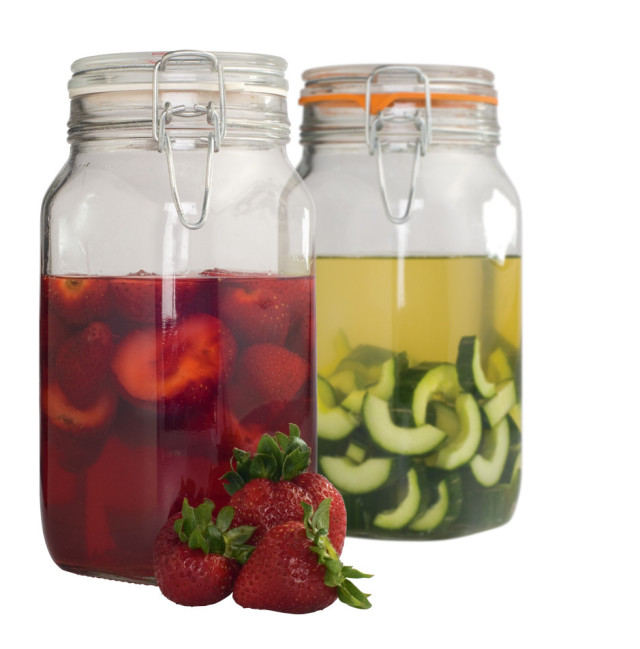
In the process of narrowing down our long list of potential summer cocktail recipes (tough duty, but someone had to do it), we tested several that required us to prepare infused liquors—from vodka infused with rosemary or cucumber to strawberry-infused tequila and peach-infused bourbon. Not only do these alcoholic “teas” make for spectacular summer quaffing, but when sitting on a windowsill or in the center of a table, they can also make great decorations, especially when they’re stored in hermetic, wire bale- infusion jars such as Bormioli Rocco “Fido” jars, sold at New Seasons. The elegant square jars come with airtight, replaceable rubber gaskets that help to seal the jar, and you can buy them in four different sizes (from 1/2 liter to 3 liters).
Fine swine
GOODS: The pig roast, perfected
If you’re more than willing to drink the full complement of cheap beer it takes to sit through an all-day pig roast, but you’re not committed enough to transform your manicured lawn into a permanent roasting pit, fake it with La Caja China (www.lacajachina.com). The coffinlike roasting-boxes-on-wheels are outfitted with a charcoal pan and stainless-steel cooking grill that sit atop the box and a large drip pan that sits on the bottom. The small farm animal of your choice (you’ll have to buy that separately from your local butcher) sits in between the charcoal pan and the dripping pan. The largest of the three sizes of Cajas (which range in price from $190 to $299) can fit a 100-pound pig, 16-18 whole chickens, 4-6 turkeys or 8-10 slabs of pork rib at one time. They also come with a free marinating syringe—an important tool that shouldn’t be abused, despite its potential to inspire creative drinking games during the long, relaxed wait.
{page break}
Summer Reading
GOODS: Best outdoor cookbooks
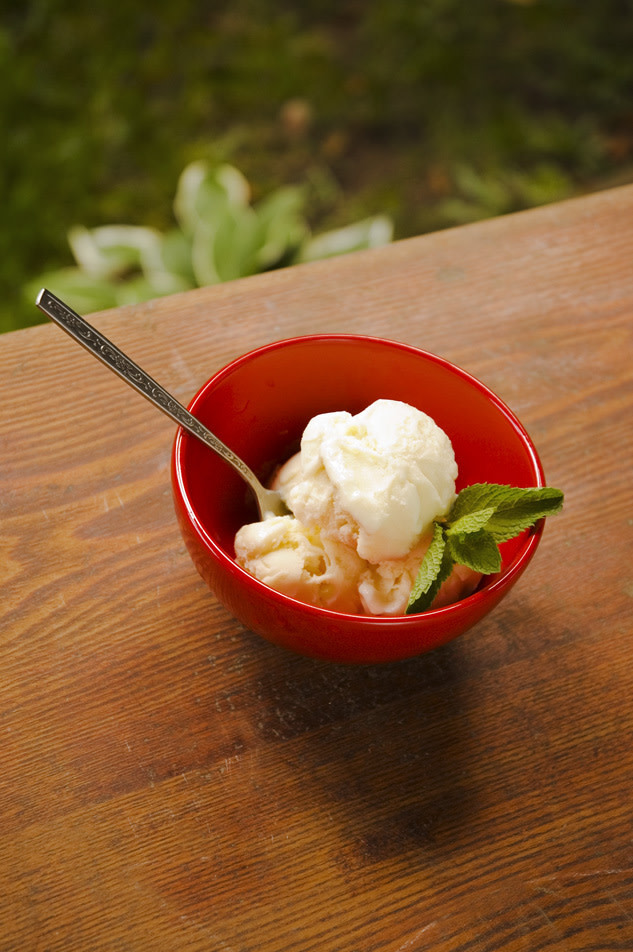
Homemade Gelato
There’s no dearth of summer entertaining and grilling cookbooks on bookstore shelves these days, but in the process of testing recipes for this story, the following tomes were particularly helpful.
Cook’s Illustrated Guide to Grilling and Barbecue (Cook’s Illustrated Magazine, 2005)
The scientific minutiae and step-by-step guides that lie within this hefty manual from the editors of Cook’s Illustrated Magazine (affiliated with the popular TV show America’s Test Kitchen) serve to educate the amateur barbecuer as well as the seasoned backyard griller on everything from the pros and cons of gas and charcoal grills to recreating Texas-style barbecued ribs at home.
The Big Book of Outdoor Cooking and Entertaining: Spirited Recipes and Expert Tips for Barbecuing, Charcoal and Gas Grilling, Rotisserie Roasting, Smoking, Deep-Frying and Making Merry, by Cheryl Alters Jamison and Bill Jamison (Morrow Cookbooks, 2006)
“Party time tips” are sprinkled throughout this 544-page ode to outdoor cooking and entertaining. From “Seasoning 101” to “How to Build a Fire,” this book covers all the bases for a memorable outdoor get-together.
Paul Kirk’s Championship Barbecue: Barbecue Your Way to Greatness With 575 Lip-Smackin’ Recipes From the Baron of Barbecue, by Paul Kirk (Harvard Common Press, 2004)
Certified master barbecue judge and Kansas City “baron of barbecue” lets us in on the secrets of world-famous ’cuers and offers us delicious recipes and anecdotes from his adventures in the cutthroat world of barbecuing championships.
How to Grill: The Complete Illustrated Book of Barbecue Techniques, by Steven Raichlen (Workman Publishing, 2001)
The king of barbecue bibles provides an illustrative, straightforward instructional guide to ’cuing with over 100 recipes, more than 1,000 instructional photographs and endless tips for stocking the essential tools and building a succesful fire.
Grill-B-Gone
GOODS: Disposable grills
Does barbecuing conjure images of an über-male grunting in front of a $5,000 stainless-steel supergrill, wielding an enormous pair of tongs? At the opposite end of the spectrum, disposable grills are a cheap ($3-4) option for those only interested in dipping a toe into the barbecuing way of life—and also a resourceful way to take the ’cue with you, even far from that custom-designed patio. The grills usually consist of aluminum pans (like the disposable ones sold for turkey roasting around Thanksgiving) filled with briquettes and a cooking grid on top—perfect for grilling dogs and burgers just about anywhere. And when you’re done, just toss it into the nearest trash bin. Chains such as Fred Meyer (888-247-4439) and Rite Aid (800-748-3243) carry disposable grills; some even come with a stand so you don’t have to get down on your hands and knees to cook your supper. —Chad Greenwood


